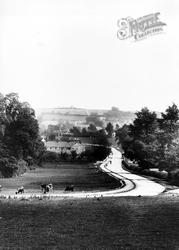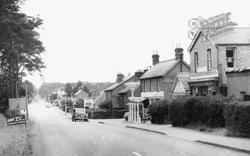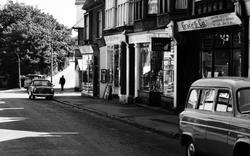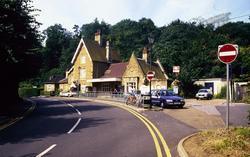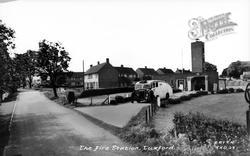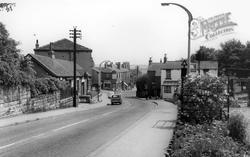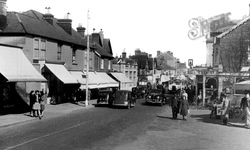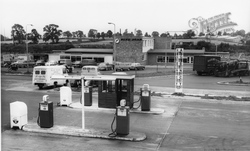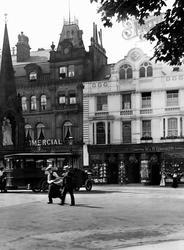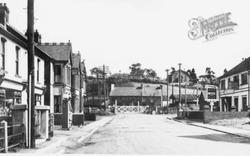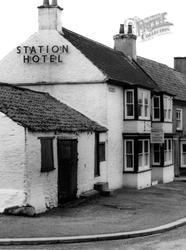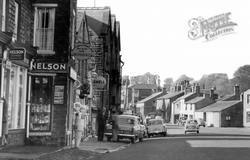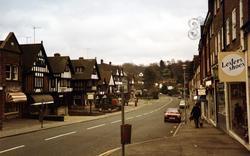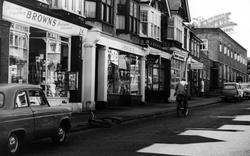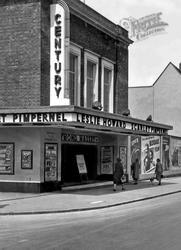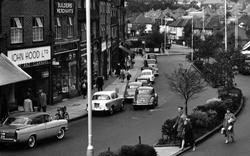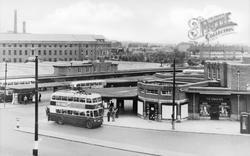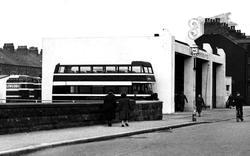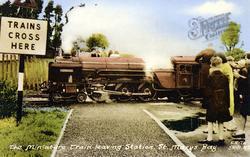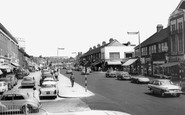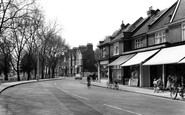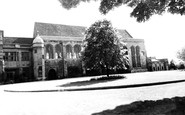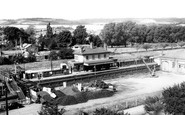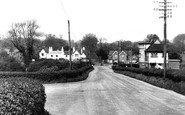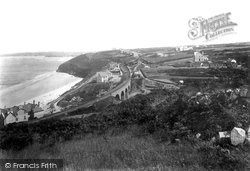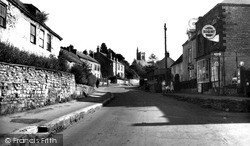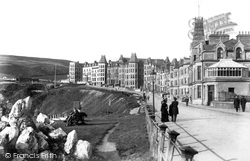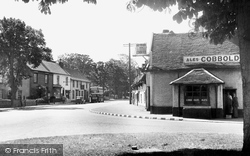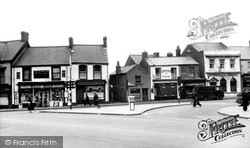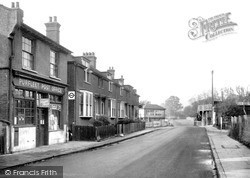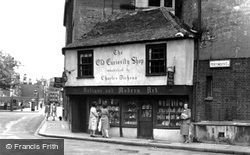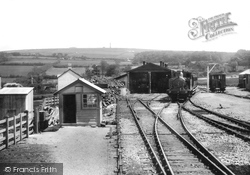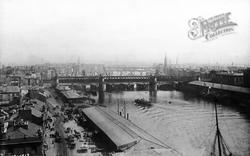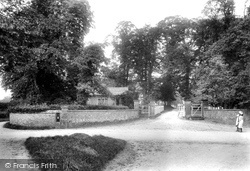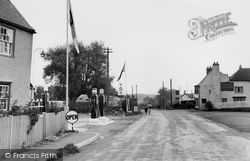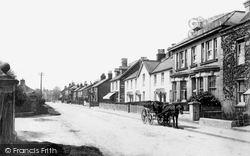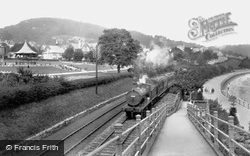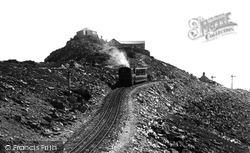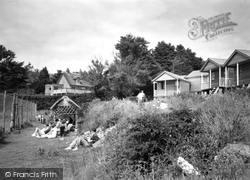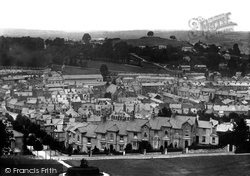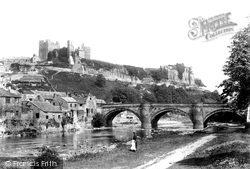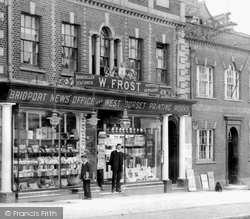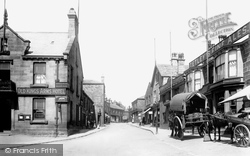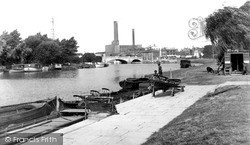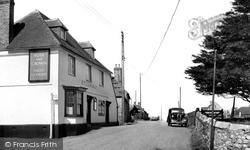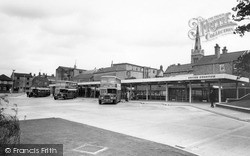Places
20 places found.
Those places high-lighted have photos. All locations may have maps, books and memories.
- Hinkley Point Power Stations, Somerset
- Lyne Station, Borders
- Perranwell Station, Cornwall
- Ferryhill Station, Durham
- Nantyronen Station, Dyfed
- Station Hill, Cumbria
- Station Town, Durham
- Widdrington Station, Northumberland
- Eggesford Station, Devon
- Bedlington Station, Northumberland
- Meopham Station, Kent
- Mintlaw Station, Grampian
- Ratho Station, Lothian
- Uphall Station, Lothian
- Alne Station, Yorkshire
- Hart Station, Cleveland
- Otterham Station, Cornwall
- Udny Station, Grampian
- Balfron Station, Central Scotland
- Ruthwell Station, Dumfries and Galloway
Photos
2,456 photos found. Showing results 841 to 860.
Maps
73 maps found.
Books
Sorry, no books were found that related to your search.
Memories
3,079 memories found. Showing results 421 to 430.
Stanley Road, South Harrow
I lived with my foster family in Stanley Road South Harrow, during the war. Our house backed on to the gas works and I always wanted to climb the gasometer which I did eventually with a friend from across the road. At ...Read more
A memory of South Harrow in 1940 by
Growing Up In Barnes 1950s
We moved to Glebe Road in 1952 (Cousland) and it was a wonderful place for children. We had a back gate opening on to the common and made full use of it. The grass was cut every year and baled for hay and we used to rush ...Read more
A memory of Barnes by
My 18th Birthday.
This photo was taken at the time I was at Shooter's Hill GS and my stepfather was stationed here as it was the HQ for the RAEC (Royal Army Education Corps). As officer's family we occasionally visited the Palace, which had then an ...Read more
A memory of Eltham in 1960 by
I Am A Beach Boy
I was born in July 1942 at 2 Church Road ,the youngest of eight children,the time I remember best is around 1952,being a kid in the Beach then was brilliant,so many things to do, Boating Lake,Minature Railway,Swimming ...Read more
A memory of Severn Beach in 1952 by
Madeley As It Was
I was born in 1949 in Victoria Road, Madeley and have many memories of life as it was in the 1950's onwards. I remember Jones' buses, Pooles the cobblers, Carters, Stodd's the Drapers, Shums the chemist, and most ...Read more
A memory of Madeley in 1949 by
Arthog
From early 1960s onwards: At school in London we had 2 summer holidays at Min-y-Don. The first time we travelled by coach, we got lost and arrived in the dark. The following year we came by train from Paddington. We had to change at ...Read more
A memory of Arthog by
39londonroad
I was born in Hackbridge in 1944. I lived there until 1953 when my grandparents, aunts, uncles, and cousins put me on a plane on May 2 to join my father who had emigrated to Canada the year before. My mother, who had lived in ...Read more
A memory of Hackbridge in 1944 by
Where I Lived In 1960
We moved into the flat above Snodland station on 9th January 1960 (my 8th birthday) and the extreme left upstairs window was the view from our lounge (or, rather - sitting room). I attended Brook Street CoE Primary school ...Read more
A memory of Snodland in 1960 by
End Of An Era
In 1944 I was a 13 year old pupil at Morley Grammar School. One beautifully sunny Sunday evening I walked from my house at 16 Albion Street (now Morrison's carpark) and about 40 yards East of the Pentecostal Church of the Nazarene ...Read more
A memory of Morley in 1944 by
Stratfield Mortimer, C1955
The entrance on the left is to Mortimer Station and the house (red brick) just right of centre is the Old Post Office. The white house just left of centre is Street House. The building to the right (and slightly closer to the foreground) is the old water pumping station.
A memory of Stratfield Mortimer in 2008 by
Captions
1,403 captions found. Showing results 1,009 to 1,032.
Behind the church, hidden in the trees, is Plympton sta- tion, which closed in 1959, and in the centre of the picture is the old St Mary's Church of England School.
The railway viaduct crosses the little valley behind the beach, and the station platform is just beyond. Another major engineering feat on this scenic line is the rock cutting in the far headland.
Shadow falls across the pavement and the chatting mums, and the roadside filling station reflects an age when even the name of the fuel had dignity.
The resort's popularity increased so much in the ten years or so prior to the outbreak of the Great War that the IOMR added a spacious platform during the 1904 rebuilding of the station. As
This is the junction of Station Road (right) and, until the by-pass was opened, the main Stowmarket to Ipswich road. In the foreground is the Greyhound, with a delivery being made to the side door.
The station entrance sign can be glimpsed behind Hill's footwear store (centre).
Billy Hole, whose newsagent's, stationer's and tobacconist's shop we see on the left, was an interesting character.
The row of cottages on the left is known as Station Terrace, with the post office close to the camera with a post box and stamp machine set into the wall.
In this 1950s view it has become an exclusive antique shop but in Victorian times it was a rather dingy emporium owned by H Poole, a jobbing stationer.
The station was at Kelly Bray, just north of the town, and it survived until 1966. On the skyline stands the monumental mine chimney at the summit of Kit Hill.
Looking along the Broomielaw towards Clyde Street this picture gives us a good view of the railway bridge serving Central Station, whilst immediately behind it work is underway on rebuilding Glasgow Bridge
He carried out hundreds of church restorations as well as designing public buildings, including St Pancras Station Hotel in London.
The petrol station still exists in an expanded form.
The name pre-dates the railway era, but it was the large station, used by passengers changing from the Portsmouth to the Brighton line, that really put the place on the map.
Here, a local passenger train is on the up line for Barrow, having left Grange station.
The railway starts near the Victoria Hotel, 350ft above sea level, and there are four intermediate stations before the summit is reached. A round trip takes about two hours.
John Jefferson was the Victorian chief officer of the coastguard station.
The Great Western Railway built a workshop here, and two main lines - to Plymouth and Torbay - divided just beyond the station.
The castle was built from 1071 by Alan the Red as a defence station at the gateway to Swaledale.
Multi-talented W Frost advertised himself as stationer, printer, bookseller, bookbinder, newsagent, and circulating library manager.
At the top end could be found the Mechanics' Institute and the police station. The scene today is little changed.
Here we see the attractive 1934 bridge with the power station rising up behind it.
Today, once away from these few houses, you cannot avoid the dominating presence of the Isle of Grain power station chimney.
This is the view from Northampton Road, with the George Hotel roof visible behind the bus station.
Places (20)
Photos (2456)
Memories (3079)
Books (0)
Maps (73)


